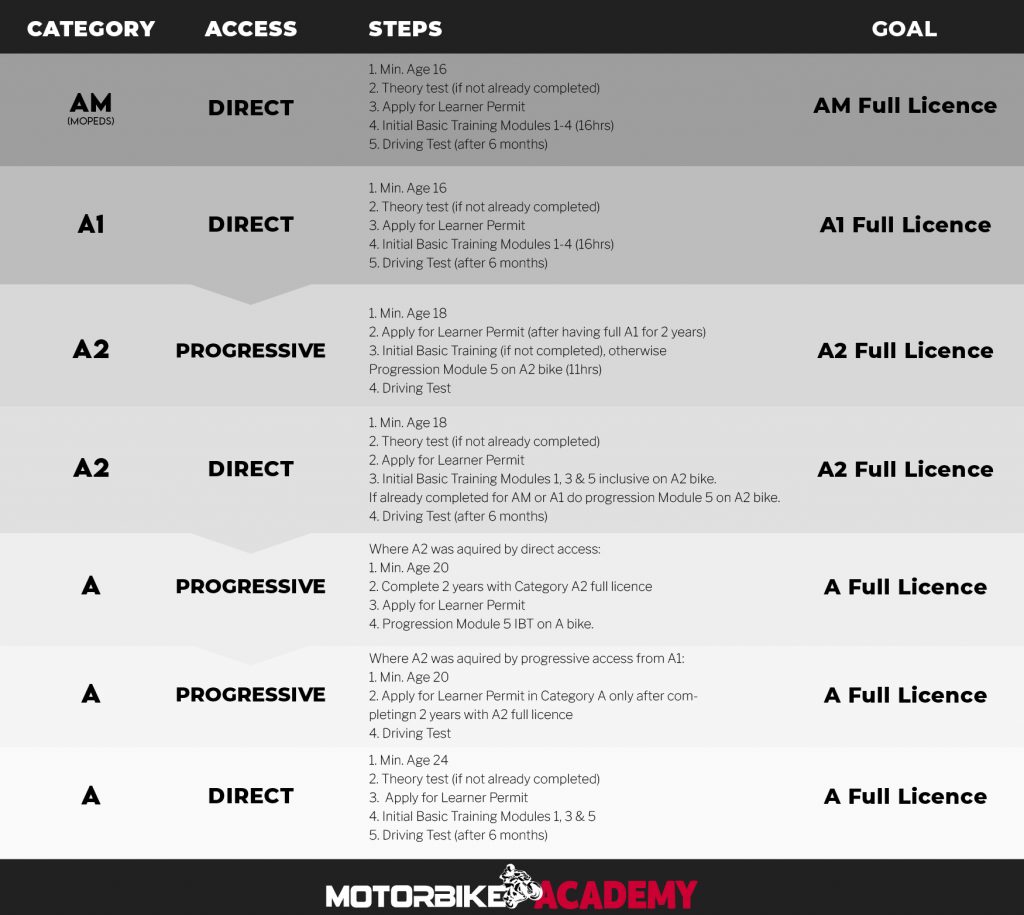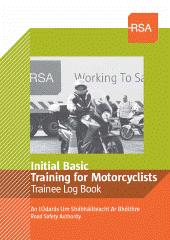
I.B.T. INFO
Initial Basic Training (I.B.T.) was introduced in December 2010 and updated again on 19 Jan 2013 as part of the RSA initiative to reduce the number of injuries and fatalities that inexperienced riders were involved in. An IBT course can only be delivered by IBT certified instructors which are regulated by the RSA.
Motorcycle IBT is a training course for learner motorcyclists. It gives new riders a strong foundation of training on which they can build their knowledge and skills.
Module 1 (required for AM, A1, A2 & A category permits)
Personal protective equipment (P.P.E.)
Introduction to motorcycle controls
Technical checks – P.O.W.D.E.R.
Placing the motorcycle on and off the stand
Walk alongside the motorcycle
How to start and stop the engine the engine (inc precautions when mounting & dismounting)
Module 2 (required for AM & A1 category permits)
Move off and stopping
Correct use of brakes
Use of clutch control & gear changing
Slow riding – controlling a motorcycle at walking pace
Figure of eight
U-turn
Slalom
Rear observation and mirrors (O.S.M.- P.S.L.)
Turning left and right
Emergency adjustment of speed
Module 3 (required for Am, A1, A2 & A category permits)
Legal requirements for riders
Rules of the road
Being seen
Road surfaces
Road and lane position
Rear observation and mirrors
Speed
Anticipation and reaction (inc dealing with emergency vehicles)
Weather conditions (inc model choices & route planning)
Fatigue
Module 4 (required for AM & A1 category permits)
Gradients
Junctions
Traffic lights
Roundabouts (O.S.M.-P.S.L.)
Safe distance
Anticipation and reaction (inc emergency vehicles)
Pedestrian & Rail crossings
Bends
Module 5 (required for A2 and A category permits)
Moving off and stopping
Use of brakes
Use of gears
Slow riding exercise
Figure of eight exercise
U-turn exercise
Slalom exercise
Rear observation and mirror work
Turning left and right
Obstacle Avoidance
Emergency adjustment of speed
Emergency Stop
Overtaking
Carrying pillion Passengers
Using a Sidecar / towing a Trailer
Gradients
Junctions
Traffic lights
Roundabouts
Safe distance
Anticipation and reaction to hazards including dealing with Emergency service vehicles.
Pedestrian & rail crossings (rail where possible)
Bends
Socially responsible Riding/driving
![certificate_of_completion [1]](https://motorbikeacademy.ie/wp-content/uploads/2020/10/certificate_of_completion-1.gif)

